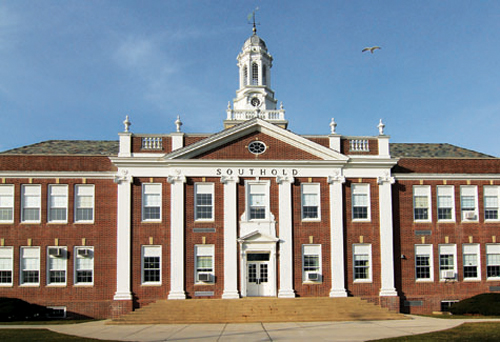Special education in the spotlight at Southold schools

About 13 percent of the Southold School District’s student body receives some form of special education services, according to a recent report by the district’s director of pupil personnel services, Alyse Middendorf.
Ms. Middendorf told the Southold School Board at its Dec. 5 meeting that 127 of the district’s 954 students were classified as special education students as of Oct. 6, though she said that number is constantly fluctuating as students move in and out of the district and are classified and declassified as needing special services.
“It’s a high number, but in a district this size, two kids can change the statistics,” Ms. Middendorf told the board. “I’d like to see us between 9 and 10 percent, but can I get there? I don’t know. It depends who moves into the district.”
In her presentation, she highlighted the district’s work in “integrated co-teaching,” in which special education teachers partner with general education teachers to teach in an integrated classroom.
“Southold’s ahead of the game on that,” she said.
The district also last year instituted a new class of fourth, fifth and sixth graders who focus on “functional academics with real world activities,” she said. That class also participates in mainstream classes. Ms. Middendorf said the school has started a similar class for first through third graders.
“I would like to open that up to surrounding districts,” she said of the program. Ms. Middendorf said one of her goals for the future is to provide a high school career and vocational program for special education students. Currently, the school has used a federal grant to partner with a company called Community Employment Options, which provides job coaching and training for special education students, but she would like to expand students’ options.
“It’s a way of engaging disengaged students,” she said.
Of the students in the special education program, Ms. Middendorf said 59 have a learning disability, 28 have a medical or health-related impairment, 12 are speech impaired, 14 have autism, eight have an emotional disability, five have multiple disabilities and one has an intellectual disability.
Students who respond well to special education classes can become declassified later in their education if they manage to overcome less severe disabilities, and can then be integrated into regular classrooms.
She said students who are not facing severe learning disabilities can be classified in the school’s “504” program, in which they are given special instructional plans to help them cope with mild learning difficulties. She said 21 students are currently in the 504 program.
“In our preschool population, we have 15 classified preschoolers and five pending,” she said. “More and more youngsters are in fact knocking on our doors. A lot of times the youngsters don’t meet the criteria [for special education classification] but we do offer resources.”
“The ideal scenario is we want to address any of these kinds of things earlier, rather than later,” said Superintendent David Gamberg.








